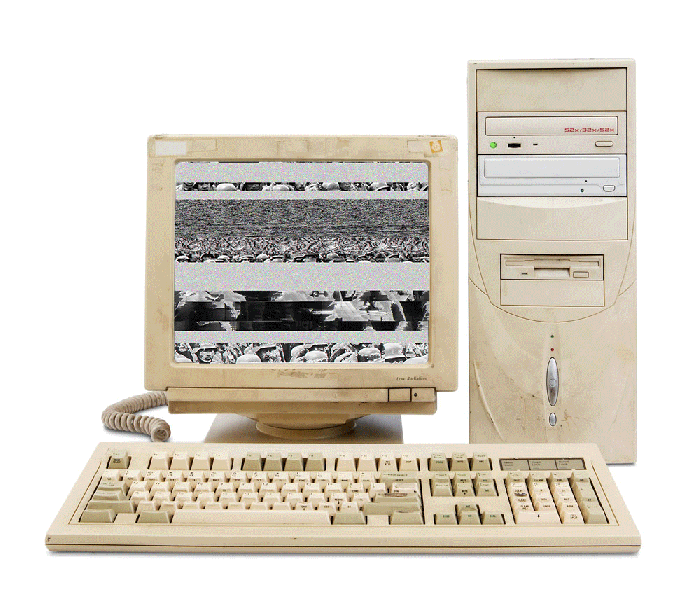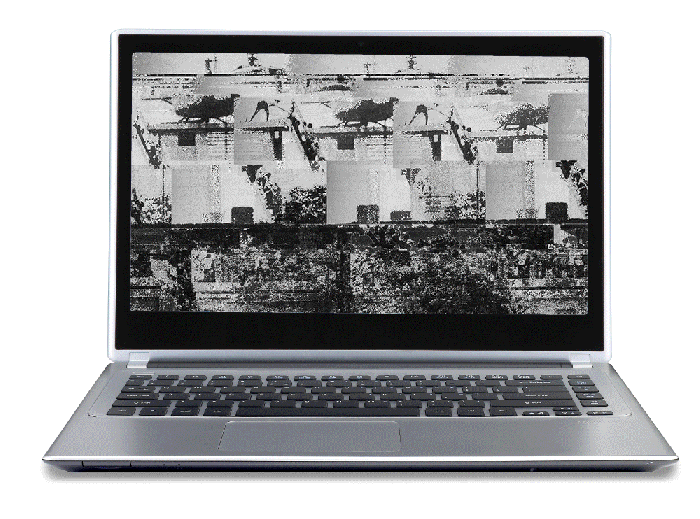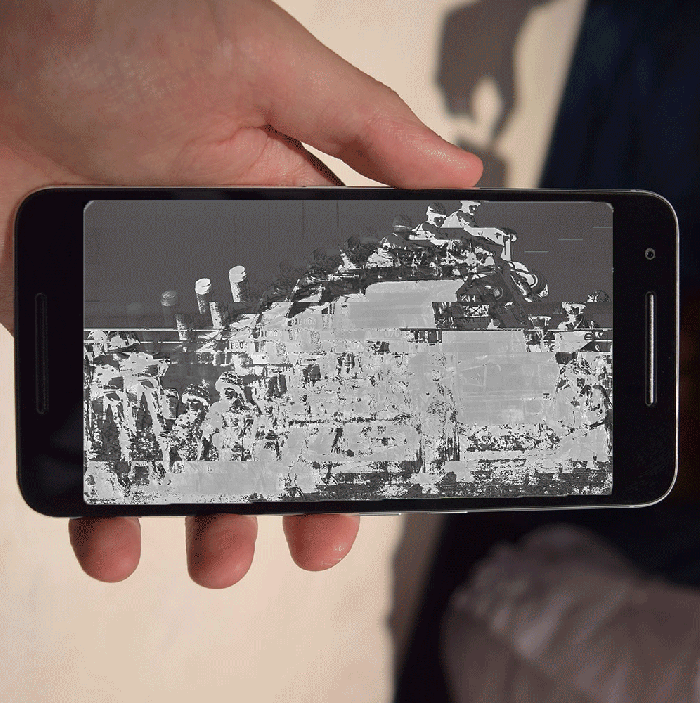The Nintendo Switch is the newest console by the famed Japanese game maker, and if you want to buy on on release day, follow this Nintendo Switch Buyers Guide! http://www.i4u.com/2016/12/118545/how-buy-nintendo-switch-launch-day
Final Project Summary
For this final project, I decided to combine the GIFs and the Glitch art that we did. Starting this project, I had the concept of having flashing screens on a series of progressively more impressive technologies. I started with the pictures of the CRT computer, the flatscreen computer, the laptop, and the cellphone. The problem now was what should go on the screens; I wanted this final project to have a definite meaning, something that someone could look at and think about. I came up with “war” as the theme, because looking at the computers, the realization that the while technology advances, and our lives get better and easier because of it, war doesn’t stop being what it is. Conveniently, there were 4 wars/conflicts that America has taken part in since the computer was introduced to the world. Images of WW2, that I glitched out to make only barely recognizable, flash across the CRT. Images of the Korean War, which were also glitched, appear on the flatscreeen, while broken images of the Vietnam War occupy the laptop. For the cell phone, I chose the Operation Desert Shield/Storm, the most recent armed conflict that has been completely separate from the ones to come after. While the Iraq War did happen afterwards, it was difficult to find a place where the Iraq War didn’t co-exist with multiple other conflicts in the same region.
Final Project




Mashup Summary
For the mashup project, I took inspiration from the scene in Apocalypse Now (and whatever that took inspiration from), where the cows are slaughtered. I made this comparison, between soldiers and livestock more obvious, because I am not a film student and don’t understand subtlety. With this mashup, I was trying to show that the comparison between soldiers and livestock begins with their recruitment and training, not just the “slaughterhouse”. It’s a fairly simple comparison, but the ‘life’ of a soldier matches up pretty well with that of beef cattle. They are first “round-up” and recruited, put through training where they gain enough pounds to be shipped off. All throughout this process, the cattle are herded along by ranchers and those who profit from their death, while the soldiers are herded along by politicians and those who profit from their wars. The last few clips are cut from a documentary on how to prepare Kosher meats; I think the “ritual killing” (in a sense) matches well between the organized religion of Judaism and that of the government.
MashUp
Vsevolod Pudovkin
A Soviet film student, maker, and star, he focused on editing while at the Moscow film school. He used editing to not just make the scene, but also to guide thoughts and psychology of the viewers. He called this relational editing, as opposed to structural editing. Pudovkin claimed that the emotion in a film is more dependent on the editing than on the acting, and that there were five techniques to control the viewers psyche. These five techniques are contrast, parallelism, symbolism, simultaneity, and leit motif. Contrast, cutting from one shot to a vastly different shot, can force a viewer to relate those two scenes in their mind. Parallelism connects two scenes by matching elements within a scene. This is often used to jump from one time period or location to another in an elegant way. In symbolism, shots are juxtaposed to make a statement. Simultaneity, or cross cutting, is where two related shots are jumped between multiple times during the same scene. Leit motif, in a visual sense, describes a recurring shot that has some kind of meaning. Overall, Pudovkins theories were the foundations for many filmmakers to come, and are still influential today.
The History of Cutting – Soviet Montage
After the Soviet government took control over Russia, they decided to use film as one way to talk with the many, many citizens. Lenin’s wife lead a committee that created a film school, the first film school in fact. Originally, the school was created as a propaganda machine, but some used the opportunity to study film as an art form. Leo Kuleshov was one of these, and his those working with him spent their time studying film theory. Among other things, they dissected Intolerance, a film by D W Griffith that Lenin happened to really enjoy. Their study lead to the Kuleshov effect, which is that audiences interpret meaning of film differently based on what shots surround it. He created the theory of Montage, meaning that the film was born in the editing of the film. Sergei Eisenstein took this farther, using montage to express intellectual messages. He related montage to Marxist dialectics, where two scenes would merge to create a new idea, which would eventually merge with another, all throughout the film. Einstein went on to describe five different elements of montage, metric, rhythmic, tonal, overtonal, and intellectual. These types of montage go from the easiest to implement, metric, to the most difficult, intellectual.
Einsteins Elements of Montage
In Einsteins 5 Elements of Montage, the man breaks down some common structures of montage. He begins with Metric Montage, the use of timing a montage to a common metric, such as 3/4 or 4/4, and Einstein recommends keeping the montage simple, and that you should be able to use a ruler to measure the meter. The next technique that is broken down is rhythmic montage, which was used in the Odessa Steps to create tension, by having the montage go against the beat of the editing. This method gives the complexity that metric montage isn’t recommended for. The third form is tonal montage, which allows the creator to give a feeling to the montage. The man talking suggest using light and dark, different shots to stress opposition, or having a certain tonality dominate in a sequence. The fourth type of montage is called overtonal, and is similar to tonal montage, but rather than just using lighting to create a feeling, it has to do with the texture of the object being lighted. Einstein’s fifth element of montage is intellectual montage, which deals with the use of symbols. Using symbols that are related causes viewers to begin to use reason as to why they are there, and how they are related.
gifs
The goal for this project, for me, was to make three cut-out style gifs, one being the wacky waving inflatable arms man, one being the transformation from the bucket of liquid into the egg into the eye, and one being a jack-in-the-box which didn’t make it to the final. The problems I had mainly stemmed from lack of preparation, or availability of materials. I didn’t have tape in order to hold the pieces in place, I couldn’t find a glass plate to press down the pieces, and I also cut out some really small pieces that were difficult to work with. This was a major problem with the jack in the box animation, with the arms and body being full of small pieces. To replace that gif I created the Trump gif, which I didn’t realize until later has a right leaning feel to it. The soldiers were taken from the picture of Nixon leaving the presidency, standing on his plane with the victory symbols. It was meant more to seem like they’re ushering him out, or at least keeping watch on him.


